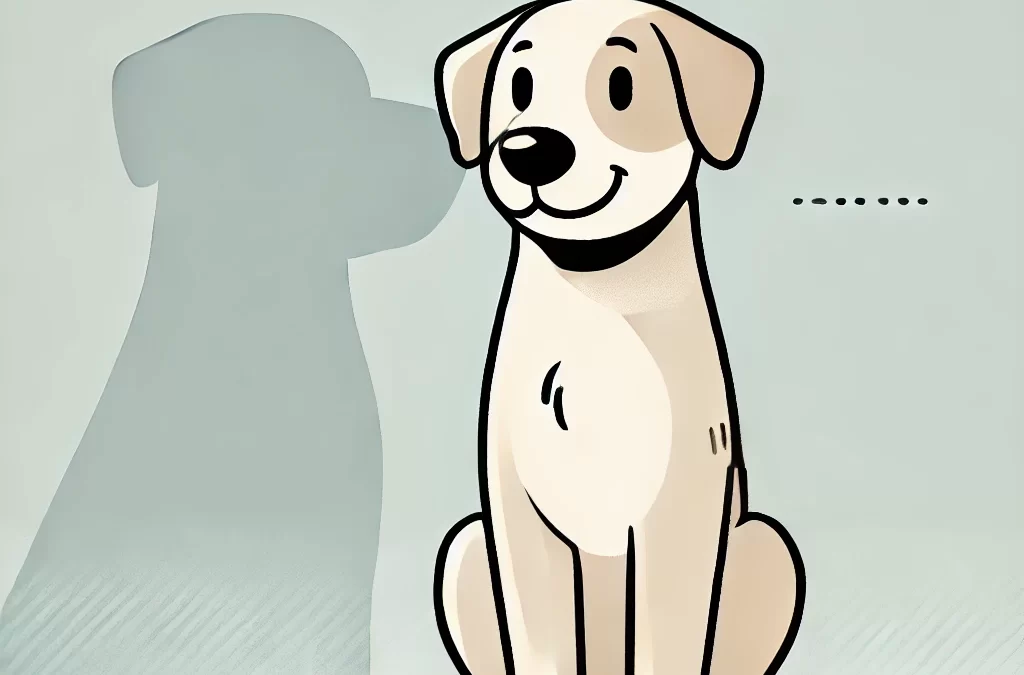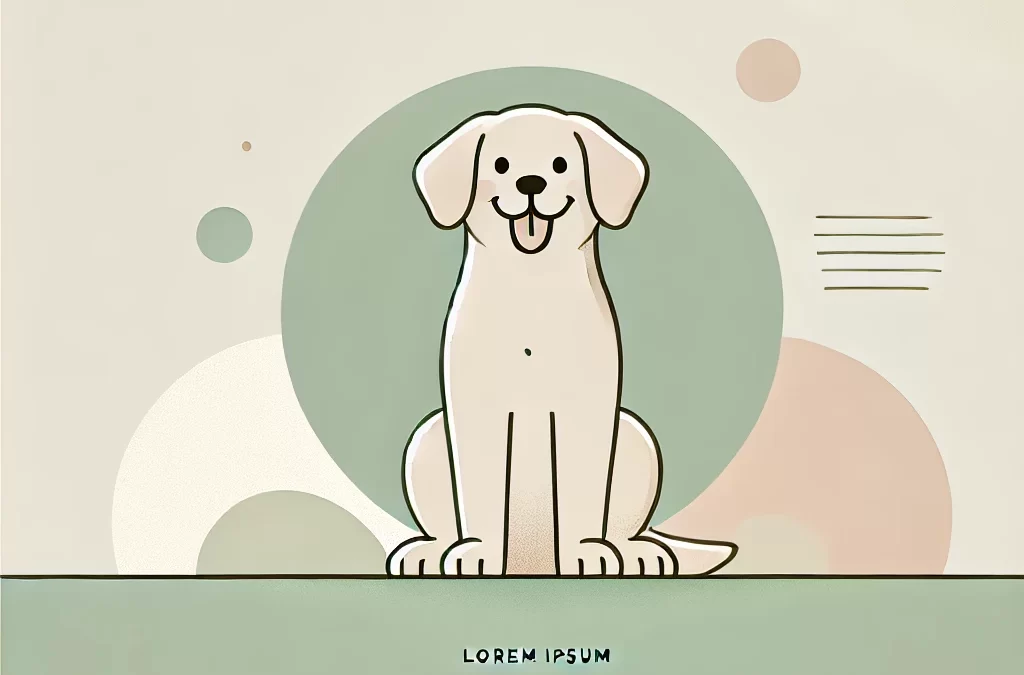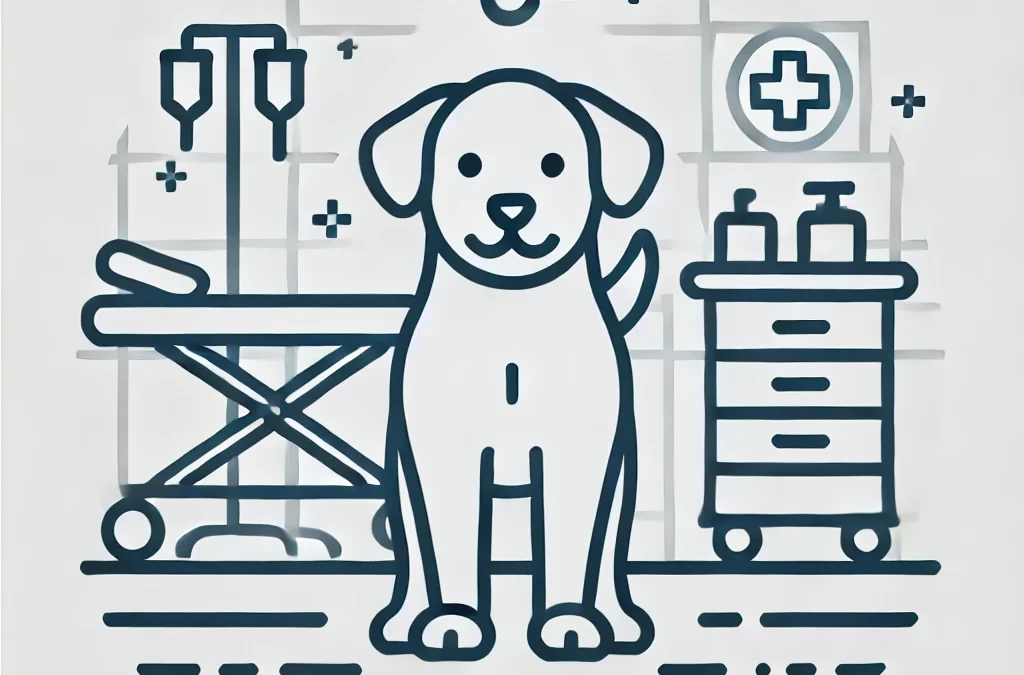
執筆者 TCMVET | 2024年11月22日 | 犬の癌と腫瘍
骨肉腫は骨がんの一種で、犬の飼い主にとって診断が難しい病気です。切断や化学療法などの従来の治療法で寿命を延ばすことができますが、ペットの生活の質を高めるために自然療法を求める人も多くいます。従来の方法と自然療法を組み合わせたバランスの取れたアプローチは、骨肉腫を患う犬に希望と安心を与えることができます。従来の方法を超えた革新的で総合的な戦略を探ってみましょう。
1. 栄養補給:治癒の基盤
骨肉腫の管理には栄養が重要な役割を果たします。炎症と戦い、免疫力をサポートするように調整された食事は、大きな違いをもたらす可能性があります。
- 高品質のタンパク質: 筋肉の維持を促し、体重減少を防ぎます。赤身の肉、魚、卵などがその供給源です。
- オメガ3脂肪酸魚油に含まれるこれらは炎症を軽減し、癌の進行を遅らせる可能性があります。
- 低炭水化物ダイエット: がん細胞はブドウ糖を栄養源として増殖します。穀物やでんぷん質の野菜を避け、ほうれん草やブロッコリーなどの野菜を多く含む食事を摂りましょう。
ヒント: コラーゲンとアミノ酸が豊富なボーンブロスは、関節を和らげ、優しく栄養を与えます。
2. 戦いにおけるハーブの味方
天然ハーブは、炎症を抑え、免疫力を高め、腫瘍の成長を遅らせることで、がんの管理を補完することができます。
- ターメリック(クルクミン): 抗炎症作用と抗がん作用があることで知られています。ターメリックと黒コショウを組み合わせると吸収力が高まります。
- チュアンシオン(四川ラビジン): 循環を促進し、腫瘍に関連する不快感を軽減すると信じられている伝統的な中国医学のハーブ。
- エシアックティー: ゴボウやニレなどのハーブのブレンドで、解毒作用や免疫力を高めるためによく使用されます。
安全性と適切な投与量を確保するために、必ず漢方薬の訓練を受けた獣医に相談してください。
3. 細胞サポートに特化したサプリメント
サプリメントは、がんの影響と闘い、全体的な健康を向上させるための味方として機能します。
- CBDオイル: 痛みを和らげ、抗がん作用がある可能性があることで知られる CBD オイルは、骨肉腫を患う犬の運動能力を改善し、不安を軽減することができます。
- 薬用キノコ: カワラヒワや霊芝などの品種は免疫力を高め、腫瘍の成長を抑制する可能性がある化合物を含んでいます。
- ボスウェリアセラータ: 痛みを和らげ、関節の健康をサポートする抗炎症剤。
注記: 必ず獣医師が承認したサプリメントを選び、成分の品質を確認してください。
4. 身体的および精神的健康
- 鍼灸とマッサージ: 鍼治療は痛みの緩和に役立ち、優しいマッサージは血行を改善し、こわばりを軽減します。
- 適度な運動: 水泳などの衝撃の少ない運動に重点を置き、犬の能力に合わせてアクティビティを調整します。
- 心の支え: 犬の治癒プロセスでは、快適さと愛情が重要な役割を果たします。充実した時間を過ごし、優しく遊び、ストレスのない環境を確保してください。
5. 自然界における新たな治療法
革新的なアプローチにより、犬の骨肉腫に対する自然療法の限界が押し広げられています。
- 高圧酸素療法(HBOT): 体内の酸素レベルを高め、腫瘍の成長を遅らせ、治癒を促進します。
- 光線力学療法(PDT): 光感受性化合物とレーザー技術を使用して、非侵襲的に腫瘍を標的とします。
- ペプチドベースの治療法これらの革新的なサプリメントは、細胞レベルで体の自然治癒プロセスを刺激します。
6. 包括的な計画のカスタマイズ
犬はそれぞれ個性があり、治療計画もそれぞれ異なります。自然療法と従来の療法を組み合わせるには、獣医師との継続的なコミュニケーションが必要です。統合医療の訓練を受けたホリスティック獣医師は、個別の指導を提供できます。
心からのリマインダー
自然療法はサポートを提供しますが、従来の治療法と併用すると最も効果的です。目標は、単に寿命を延ばすだけでなく、愛するペットの質の高い生活を確保することです。思いやりと知識に基づいたアプローチにより、この困難な旅の間、愛犬に快適さ、ケア、愛情を与えることができます。
現代の知見と長年実証された自然療法を融合することで、あなたの犬に喜びと尊厳に満ちた人生を送る最高のチャンスを与えることができます。私たちは力を合わせて、骨肉腫を患う犬の治癒のあり方を再定義することができます。

執筆者 TCMVET | 2024年11月21日 | 犬の癌と腫瘍
犬の肥満細胞腫を管理するとなると、飼い主はしばしば治療の選択肢の海を進むことになります。その中でも、もともと潰瘍の治療のために開発された薬であるシメチジンは、この複雑な病気の症状と進行を管理する可能性で注目を集めています。しかし、その役割は正確には何であり、投与量はその効果にどのように影響するのでしょうか。新しい視点でこのトピックに飛び込んでみましょう。
シメチジンとは何ですか?
シメチジンは、胃酸の分泌を抑えるために開発された、H2受容体拮抗薬と呼ばれる薬剤のクラスに属します。主な用途は胃腸疾患ですが、研究者らは犬の肥満細胞腫の治療にも使用できるというさらなる利点を発見しました。
その関係はヒスタミンにあります。肥満細胞腫はヒスタミンを放出し、胃潰瘍や炎症などさまざまな症状を引き起こす可能性があります。シメチジンは H2 受容体をブロックすることで、これらの影響を軽減するのに役立ちます。
肥満細胞腫瘍にシメチジンを使用する理由は何ですか?
- 症状管理シメチジンはヒスタミンの放出を抑え、胃酸の増加によって引き起こされる嘔吐、下痢、不快感などの症状を抑えるのに役立ちます。
- 腫瘍の安定化いくつかの研究では、シメチジンが腫瘍の微小環境を変化させることで腫瘍の進行を遅らせる可能性があることを示唆していますが、この効果はまだ調査中です。
- サポート役シメチジンは、手術、化学療法、自然療法などの治療を補完するマルチモーダルアプローチの一部として使用されることが多いです。
投与量: 最適な量を見つける
適切な投与量を決定することは、望ましい治療効果を得るために非常に重要です。しかし、犬の場合、サイズ、年齢、全体的な健康状態などの要因が投与量に大きく影響するため、「万能」アプローチは機能しません。
- 一般的なガイドラインシメチジンは通常、経口投与される。 1キログラム(2.2ポンド)あたり5~10mg 体重1ポンドあたり2~3回与えてください。ただし、必ず獣医師の指示に従ってください。
- テーラーメイド投与: 投与量は症状の重症度、腫瘍の進行度、および犬が追加治療を受けているかどうかによって変わることがあります。投与量の調整は一般的であり、定期的なモニタリングに基づいて行う必要があります。
獣医の監督の重要性
シメチジンは比較的安全ですが、副作用がないわけではありません。潜在的な問題としては、下痢、無気力、食欲の変化などがあります。また、特に犬が化学療法を受けている場合や、NSAID などの他の薬を使用している場合は、他の薬との相互作用を慎重に考慮する必要があります。
獣医による監督により以下が保証されます:
- 正確な投与。
- 副作用や相互作用の監視。
- 犬の反応に基づいて調整します。
代替療法と補完療法
シメチジンは効果的な手段ですが、他の治療法と組み合わせると最も効果的です。代替療法としては次のようなものがあります。
- 天然サプリメント: チュアンシオン(四川ラビッジ)やターメリックなどのハーブは、抗炎症効果があり、全体的な健康をサポートする可能性があります。
- 食事の調整低ヒスタミン食はシメチジンの効果を補完し、特定の食品によって引き起こされるヒスタミンの放出を減らします。
- ホリスティック・ケア: 鍼治療、CBD オイル、その他の支持療法は、肥満細胞腫瘍を患う犬の生活の質を改善するのに役立つ可能性があります。
肥満細胞腫治療における将来の革新
新たな研究では、獣医腫瘍学におけるシメチジンや類似の薬剤の役割を探求し続けています。標的療法からヒスタミン阻害剤まで、犬の肥満細胞腫瘍の治療の将来は、より個別化された効果的なソリューションに期待が寄せられています。
重要なポイント
シメチジンは肥満細胞腫の管理に有効な薬ですが、その効果は適切な使用と幅広い治療計画への統合にかかっています。獣医師と緊密に協力し、最新の開発情報を入手することで、愛犬が快適で幸せな生活を送るチャンスを最大限に高めることができます。
終わりに
愛犬が肥満細胞腫と診断された場合は、ためらわずに利用可能なすべての選択肢を検討してください。シメチジンは治療薬ではないかもしれませんが、症状を管理し、全体的な治療をサポートする能力があるため、パズルの重要な部分となります。カスタマイズされたケアと総合的なアプローチにより、あなたの愛犬は困難にもかかわらず元気に成長し続けることができます。

執筆者 TCMVET | 2024年11月21日 | 犬の癌と腫瘍
愛犬が健康上の問題に直面したとき、飼い主はしばしば最新の診断法に頼って問題を見つけようとします。その中でも超音波は獣医師にとって頼りになるツールとなっています。しかし、犬のがん検出に超音波はどれほど効果があるのでしょうか。この疑問を詳しく探り、この技術の長所と限界の両方を検証してみましょう。
獣医学における超音波の基礎
超音波画像診断法は、超音波検査とも呼ばれ、音波を使用して犬の内臓のリアルタイム画像を作成します。肝臓、腎臓、脾臓、膀胱などの軟部組織の検査に特に有効です。静的画像を提供する X 線とは異なり、超音波は動画像を提供するため、獣医師は臓器の機能を評価し、異常を検出できます。
超音波でがんを検出する方法
超音波検査は、がんを示唆する腫瘍、異常な組織増殖、または異常な臓器構造を特定するのに役立ちます。例:
- 腫瘍の位置特定: 超音波検査では、腫瘍の大きさ、形状、位置を明らかにすることができます。これは、肝臓や腎臓の腫瘍など、腹部のがんの診断に特に役立ちます。
- ガイド生検超音波は癌を確定診断することはできませんが、実験室分析用の組織サンプルを採取するための針生検を誘導する上で重要な役割を果たします。
- 進行状況の監視がん治療を受けている犬にとって、超音波は病気が治療にどのように反応するかを監視するための貴重なツールです。
がん検出における超音波の限界
超音波には利点があるものの、一定の限界もあります。
- がんは確認できない: 超音波検査では腫瘤は特定できますが、悪性(がん性)か良性(非がん性)かを判断することはできません。確認には通常、生検または MRI や CT スキャンなどの高度な画像診断が必要です。
- 演算子の依存関係: 超音波検査の精度は獣医師のスキルと経験に依存します。画像の解釈を誤ると、偽陽性または偽陰性の結果につながる可能性があります。
- すべてのがんに適応するわけではない: 超音波は骨、肺、または構造が密な部分のがんの検出にはあまり効果がありません。このような場合には、他の画像診断技術の方が適しています。
犬に超音波検査を検討すべき時期
犬に原因不明の体重減少、嘔吐、腫れ、無気力などの症状が見られる場合、獣医師は診断プロセスの一環として超音波検査を勧めることがあります。超音波検査は非侵襲的で痛みがなく、リスクも最小限であるため、多くの場合、最初のステップとして好まれます。
将来のイノベーション:超音波によるがん検出能力の向上
獣医学の進歩により、超音波技術は継続的に改善されています。造影超音波やエラストグラフィーなどの技術は、がん組織をより正確に特定するための有望なツールとして登場しています。これらの革新により、近い将来、超音波検査で悪性腫瘍と良性腫瘍をより正確に区別できるようになるかもしれません。
がん診断へのバランスのとれたアプローチ
超音波は強力な診断ツールですが、総合的な診断アプローチの一部として使用すると最も効果的です。超音波を血液検査、生検、高度な画像診断などの他の技術と組み合わせると、最も正確な診断と効果的な治療計画が犬に確実に提供されます。
最終的な考え
超音波は獣医学に欠かせないツールであり、犬の健康に関する貴重な情報を提供します。限界はあるものの、がんの検出と管理に重要な役割を果たします。情報を入手し、獣医と緊密に連携することで、難しい診断結果に直面しても、愛犬が可能な限り最善のケアを受けられるようにすることができます。
40

執筆者 TCMVET | 2024年11月20日 | 犬の癌と腫瘍
犬の伝染性性器腫瘍(TVT) は犬の癌の独特な形態で、主に直接接触することで感染します。通常は獣医の介入が必要ですが、医療を補完する在宅支持療法への関心が高まっています。この記事では、革新的で自然なホリスティックな実践が、自宅での TVT の管理に重要な役割を果たす方法を探り、獣医との連携の重要性を強調します。
TVT を理解する: 概要
TVT は、犬の外性器、口、または鼻に発生する伝染性の腫瘍です。一般的な症状は次のとおりです。
- 目に見える腫瘍の成長
- 出血または分泌物
- 患部の不快感や痛み
主な治療には、化学療法(通常はビンクリスチンを使用)、手術、放射線療法などがあります。ただし、これらの治療は、ペットの飼い主によっては必ずしも利用できる、または費用が手頃なわけではありません。このような場合に、在宅でのサポートケアが効果を発揮します。
TVT で犬の在宅ケアに革命を起こす
1. 免疫力を高める栄養
犬の免疫システムは、がんと闘う上で重要な役割を果たします。栄養価の高い食事を与えることで、犬の全体的な健康をサポートできます。次の点を考慮してください。
- 脂肪分の少ないタンパク質源: 筋肉量を維持するために七面鳥、鶏肉、魚を食べます。
- がん予防食品ブルーベリー、ニンジン、ブロッコリーには酸化ストレスと戦う抗酸化物質が含まれています。
- オメガ3脂肪酸: 魚油や亜麻仁油に含まれており、炎症を軽減するのに役立ちます。
プロのヒント: 腫瘍の成長を悪化させる可能性がある糖分や穀物を多く含む食品は避けてください。
2. 自然療法とハーブ
自然療法は TVT の症状を緩和し、管理するのに役立ちます。有望な選択肢としては次のようなものがあります。
- ターメリック(クルクミン): 抗炎症作用と抗腫瘍作用があることで知られています。
- チュアンシオン(四川ラビジン): 血行を改善し、治癒を促進すると信じられている伝統的な中国のハーブ。
- CBDオイル: 炎症を軽減し、痛みを管理し、全体的な快適さを向上させるのに役立ちます。
重要: 安全な投与量を決定するには必ず獣医に相談してください。
3. ストレスのない環境を作る
ストレスは犬の免疫システムを弱める可能性があります。次の方法で、ペットが穏やかで快適な環境にいるようにしてください。
- 家庭内の騒音から離れた静かな休憩スペースを提供します。
- ラベンダーエッセンシャルオイルディフューザーなどの心を落ち着かせるものを使用する(換気の良い部屋で)。
- 活動的で幸せな状態を保つために、軽くてストレスの少ない活動に従事します。
4. 創傷および腫瘍のケア
外部に腫瘍がある場合は、出血したり感染したりする可能性があります。自宅でのケアには以下が含まれます。
- 感染を防ぐために、患部を生理食塩水で優しく洗浄します。
- 獣医承認の軟膏を使用して治癒を促進します。
- 赤み、腫れ、悪臭などの感染の兆候を監視します。
5. 腸の健康を強化する
TVT 治療を受けている犬は、消化器系の問題を抱えていることがよくあります。プロバイオティクスとプレバイオティクスは、腸の健康を改善し、栄養素の吸収を高めることができます。ヨーグルト (無糖) または獣医用プロバイオティクス サプリメントを食事に加えることができます。
6. 代替療法
- 指圧とマッサージ: 血行を改善し、痛みを軽減するのに役立ちます。
- Homeopathy: 次のような治療法 アルセニカムアルバム または トゥジャ がん治療のサポートに使用されることもあります(獣医の指導の下で)。
在宅治療でできること、できないこと
これらのアプローチは犬の快適さと全体的な健康を向上させることができますが、 専門的な医療に代わるものではないTVT は深刻な病気で、治癒には化学療法やその他の獣医治療が必要になることがよくあります。自宅でのケアは、犬の生活の質を向上させ、回復をサポートするための補完的なアプローチとして使用するのが最適です。
全体的アプローチが鍵
自宅で TVT を治療するというのは、奇跡的な治療法を見つけることではなく、犬が養われ、支えられていると感じられる環境を作ることです。獣医による治療と革新的な在宅ケアの実践を組み合わせることで、愛犬が回復する可能性を最大限に高めることができます。
最終的な考え
自宅で TVT を管理するには、献身、創造性、獣医専門家との協力が必要です。病気を治療するだけでなく、犬の人生に希望、健康、幸福を取り戻すことが目的です。この総合的なアプローチにより、飼い主は犬の治癒過程に積極的に関与し、犬が当然受けるに値する愛情とケアを確実に受けられるようにすることができます。

執筆者 TCMVET | 2024年11月18日 | 犬の癌と腫瘍
犬の白血病は「静かな病気」と呼ばれることがよくあります。症状が表面化する頃には、病気がすでに進行している可能性があります。しかし、この隠れた敵が大きな音を立てて襲いかかる前に、そのかすかなささやきに耳を傾けることができたらどうでしょうか。犬の白血病の初期兆候に気づけば、犬の命が救われるだけでなく、生活の質も大幅に向上します。臨床的洞察と犬のケアに対する総合的なアプローチを融合させ、これらの早期警告信号の型破りな探究に乗り出しましょう。
微妙なヒントを解読する
白血病は、他のそれほど深刻ではない病気によく似せられます。早期発見には、鋭い観察力と犬の行動に対する直感的な理解が必要です。以下に、注意すべき目立たない兆候を挙げます。
- 異常な疲労感または無気力 いつもは元気な子犬が、突然、遊ぶよりものんびり過ごすことを好むようになります。この無気力は、単に老化や大変な一日のせいではありません。何かもっと深刻な問題があるかもしれないという身体からのシグナルなのです。
- 歯茎と舌が青白くなっている 健康な歯茎は、風船ガムのようなピンク色です。犬の歯茎や舌が青白く見える場合は、赤血球の生成低下によって引き起こされる白血病の一般的な初期症状である貧血の可能性があります。
- 持続性または原因不明の感染症 治療に反応しない頻繁な感染症は、免疫システムが弱まっていることを示している可能性があります。白血病は白血球の機能を低下させ、犬を細菌、真菌、またはウイルスの侵入に対して脆弱にします。
- リンパ節の腫れ 特に首、肩、後ろ足の周りのリンパ節が腫れているのは、何かがおかしいという明らかな兆候です。白血病に限ったことではありませんが、調べる価値のある兆候です。
- Unexplained Weight Loss 白血病にかかった犬は、食欲は維持しているにもかかわらず、体重が減ることがあります。これは、病気が体の資源を奪い、筋肉の衰弱とエネルギーの枯渇を引き起こすために起こります。
- 打撲や出血 皮膚の下の小さな赤または紫色の点(点状出血)や原因不明のあざに注意してください。白血病は血小板の生成を妨げ、凝固の問題を引き起こします。
- 食欲不振または嘔吐 これらの症状は多くの病気に共通していますが、症状が持続する場合は白血病などの根本的な問題を示している可能性があります。
早期発見が重要な理由
白血病は早期発見すればするほど、治療結果は良くなります。多くの犬の飼い主は、特に高齢の犬の場合、時々無気力になったり食欲がなくなったりするのは普通だと考えていますが、これらの兆候を無視すると、適切なタイミングで介入する機会を逃すことになります。定期的な血液検査は、白血病が進行する前に発見するためのシンプルですが強力な手段です。
臨床を超えて:感情的なつながり
犬は痛みを隠すのが得意です。家族との交流を断ったり、様子がおかしいように見せたりする行動の変化は、苦痛の初期の感情的なサインであることが多いです。ペットとの深い絆を築くことで、こうした微妙な変化に気づくことができます。
犬の白血病に関する総合的な視点
化学療法やステロイドなどの従来の治療法が一般的ですが、ホリスティックケアを組み込むことで犬の生活の質を高めることができます。以下にいくつかの選択肢を示します。
- 栄養サポート
- 免疫力を高めるには、ブルーベリーやほうれん草など抗酸化物質が豊富な食品を摂取しましょう。
- 骨スープは必須栄養素を提供し、食欲を維持するのに役立ちます。
- 天然サプリメント
- ターメリック: 抗炎症作用により、全体的な健康をサポートします。
- 霊芝キノコ免疫力を高め、抗がん作用があることで知られています。
- ストレスマネジメント
- 犬に安全なラベンダーなどのオイルを使った優しいマッサージやアロマセラピーは、症状を悪化させる可能性のあるストレスを軽減することができます。
- ハーブ療法
- 伝統的な中国医学のハーブ レンゲ そして ダンシェン 免疫力とエネルギーレベルをサポートする可能性があります。
予防策:先手を打つことはできるのか?
白血病は必ずしも予防できるわけではありませんが、特定の行動によってリスク要因を低下させることができる可能性があります。
- 定期的な獣医検査: 毎年の血液検査により異常を早期に発見できます。
- 毒素への曝露を制限する: ペットの周りでの殺虫剤、除草剤、喫煙は避けてください。
- 健康的な食生活を維持する: バランスのとれた栄養豊富な食事は犬の免疫システムを強固に保ちます。
いつ行動するか
愛犬がこれらの初期症状を複数示している場合は、待たずにすぐに獣医に相談してください。簡単な血液検査で原因がわかり、白血病と診断された場合は早期介入により愛犬の寿命を大幅に延ばすことができます。
希望の光
白血病は必ずしも死を意味するものではありません。獣医学の進歩、総合的なサポート、飼い主の揺るぎない愛情があれば、白血病と診断された犬も充実した生活を送ることができます。鍵となるのは、警戒、教育、そして積極的な対策です。
結論
犬の白血病の初期症状は風にささやくようなもので、見落としがちですが、聞くことは重要です。犬の身体的および感情的な合図に注意を払っていれば、この隠れた敵が根付く前に阻止することができます。結局のところ、私たちの4本足の仲間は、必要なときに最善を尽くすに値します。

執筆者 TCMVET | 2024年11月16日 | 犬の癌と腫瘍
「腫瘍」という言葉を聞くと、私たちはたいてい最悪のシナリオである癌を思い浮かべます。しかし、すべての腫瘍が悪性というわけではありません。実際、犬の良性腸腫瘍はそれほど悪性ではなく、適切なアプローチで効果的に管理できる場合が多いのです。この記事では、これらの良性腫瘍のニュアンスを詳しく調べ、その原因、症状、管理戦略を理解するのに役立ちます。
良性腸腫瘍とは何ですか?
良性の腸腫瘍は、犬の消化管に発生する非癌性の腫瘍です。腫瘍は周囲の組織を侵したり、体の他の部分に広がったりすることはありませんが、腫瘍が大きくなって腸を塞いだり、正常な機能を妨げたりすると、不快感や消化器系の問題を引き起こす可能性があります。
犬によく見られる良性腸腫瘍の種類:
- 腺腫: 腸の内壁の腺細胞から発生します。
- 平滑筋腫腸壁の平滑筋細胞に由来します。
- ポリープ腸の内壁から突出する小さな腫瘍。
原因: なぜこれらの腫瘍が発生するのでしょうか?
犬の良性腸腫瘍の正確な原因は不明ですが、いくつかの要因が関係している可能性があります。
- Genetics: ジャーマンシェパードやコリーなどの一部の犬種には、素因がある可能性があります。
- Chronic Inflammation: 長期にわたる消化管の炎症は異常な細胞増殖のリスクを高める可能性があります。
- 食事要因: 繊維質の少ない質の悪い食事はポリープの発達に影響を与える可能性があります。
症状: 注目すべき点
良性腫瘍はゆっくりと成長することが多く、最初は症状がわかりにくいものです。時間が経つにつれて腫瘍が大きくなると、次のような兆候が現れることがあります。
- 慢性的な嘔吐または下痢: 刺激または部分的な閉塞によるもの。
- 減量: 腫瘍が栄養吸収に影響を与える場合。
- 便に血が混じる: 腫瘍の位置に応じて明るい赤色または暗い色になります。
- Abdominal Pain: 腫瘍により腹部膨満や閉塞が生じる場合。
- 食欲の変化: 空腹感と食事拒否の間の変動。
レッドフラッグ: 持続的な消化管症状がある場合は、獣医師の診察を受けて徹底的な評価を受ける必要があります。
診断: 問題の特定
良性腸腫瘍の診断には、次のような複数の技術の組み合わせが必要です。
- 身体検査腹部を触診して腫瘤の有無を確認します。
- イメージング: 腸管を視覚化するためのX線または超音波検査。
- 内視鏡検査: 腫瘍を観察し、場合によっては生検を行うためのカメラ補助検査。
- 生検確定診断は、腫瘍が良性かどうかを判断するために組織サンプルを分析することによって行われます。
治療:良性腫瘍の管理の選択肢
良性腫瘍は生命を脅かすものではありませんが、症状を緩和したり合併症を予防したりするために治療が必要になることがよくあります。
1. 外科的除去
- いつ手術が必要ですか? 腫瘍が閉塞や重篤な症状を引き起こす場合。
- 結果: 良性腫瘍の場合は通常手術で治癒し、犬は手術後に順調に回復します。
2. 内視鏡的ポリープ切除術
- それは何ですか? 内視鏡を使用してポリープや小さな腫瘍を除去する、侵襲性の低い方法。
- 利点: 回復時間が短く、不快感も最小限に抑えられます。
3. 食生活の調整
- なぜ役立つのか: 繊維質の多い食事は炎症を軽減し、治療後の腸の治癒をサポートする可能性があります。
- 摂取すべき食品: カボチャ、調理したサツマイモ、獣医推奨のドッグフード。
4. 監視
- 小さな腫瘍の場合: すぐに介入することなく成長を監視するための定期的な検査。
予後: 何を期待するか
良性の腸腫瘍は、適切に治療すれば、一般的に予後は良好です。腫瘍が再発したり、さらなる問題を引き起こしたりしないようにするには、定期的な獣医の診察と経過観察が不可欠です。
予防:リスクを下げることはできますか?
予防を保証することは不可能ですが、以下の手順を実行することで、犬の良性腸腫瘍を発症するリスクを軽減できる可能性があります。
- バランスの取れた食事: 高品質のタンパク質、健康的な脂肪、十分な繊維を摂取します。
- 定期的な獣医の診察定期的な検査により、潜在的な問題を早期に発見できます。
- 症状に注意する早期発見により、よりシンプルで侵襲性の低い治療が可能になります。
ユニークな視点:腸と全体的な健康
興味深いことに、犬の腸の健康は犬の全体的な健康状態に密接に関係しています。良性の腫瘍が存在する場合、炎症や不適切な食事など、根本的な不均衡の兆候である可能性があり、注意が必要です。腫瘍の治療は治療の過程の一部に過ぎません。根本的な原因に対処することで、犬の健康と活力を維持できます。
結論: 課題をチャンスに変える
犬の良性腸腫瘍は心配ではありますが、管理可能で、治癒可能な場合が多いです。腸の健康を最優先にし、栄養のある食事を与え、獣医師との強力なパートナーシップを維持することを思い出させてくれます。注意と警戒があれば、あなたの愛犬は幸せで快適な生活を続けることができます。






